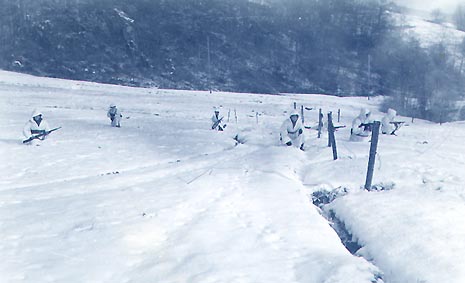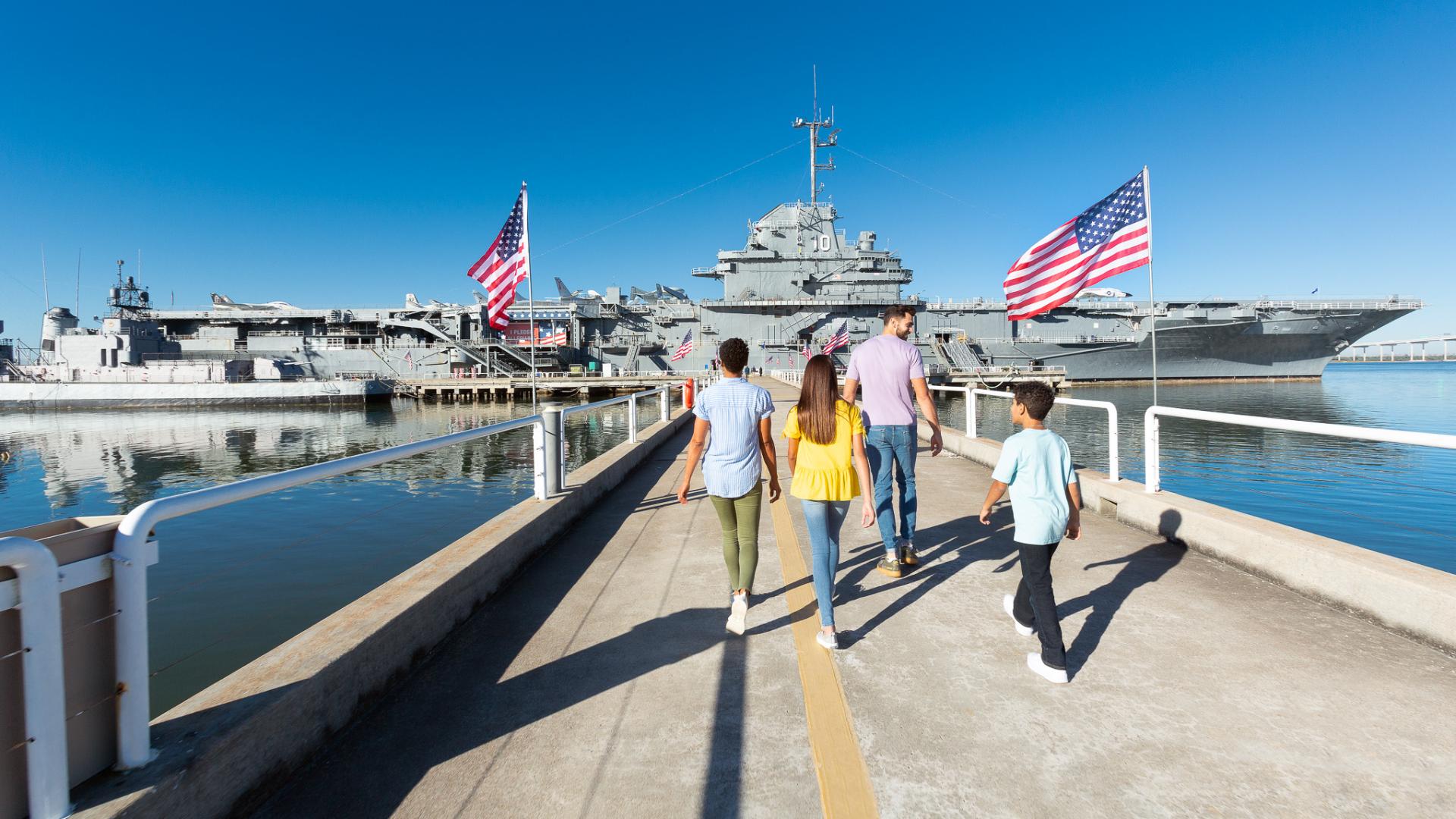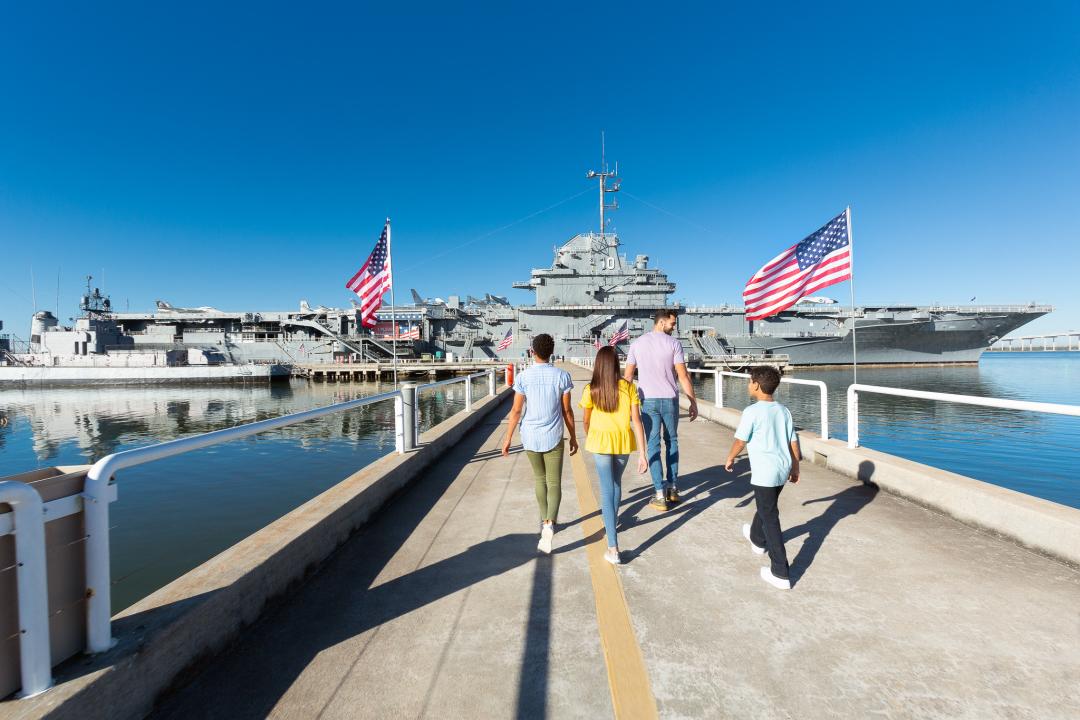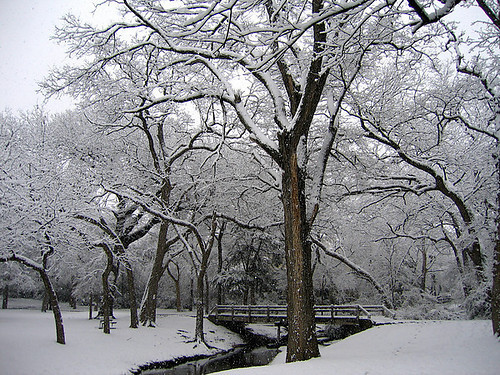Here is the rest of Colonel Murray’s story…read here if you missed the first part…
He knew that this bridge like the first would be mined. Lt. Murray considered using the rubber boats, but quickly discarded that idea as it would take too long and he didn’t have the time. The planks were a possible solution, but they were too short to span the stream. He thought about using the planks to explore the bridge pushing them forward to expose or explode the mine, but on second thought decided that was not a good idea. The only other way was to ford the stream, but the water was waist deep. Wet and frozen soldiers would not go far that night.

Third infantry division GI's advance in wintertime France.
While his men waited, he moved quickly downstream to look for an alternate crossing site. Lt. Murray used a precious five to ten minutes looking for a crossing site, found none and headed back to the bridge, where he had a decision to make. Back at the bridge he discovered that Raymond Rogers had made the decision for him.
Lt. Murray’s special soldier was Raymond Rogers. He was a private, First Class (PFC). He was a veteran of about twelve month’s combat experience and was a tall, slender young man, 19 years of age from Kentucky.
As Lt. Murray neared the bridge on his return trip, Rogers got up from his position near the head of the company and moved quietly to the little bridge and as he went he tramped a path through the snow. He stepped on the bridge, first one foot and then the other shuffling forward and clearing a path as he went. Those who were close enough to see what Rogers was doing held their breath, waiting for the explosion which was sure to come. Rogers moved on, taking slow deliberate steps. He kicked the snow as he cleared a narrow lane, and when it was over, Rogers stepped on the opposite bank unharmed. The company crossed the bridge in his footpath and the lieutenant gave a “quiet” thanks to Rogers as they continued on towards the Ill River to finish their mission that night.
Rogers was not singled out as a hero, but he certainly showed that he had within him the stuff which made heroes. It was obvious that he was willing to give his legs and perhaps his life for his friends in his unit. Rogers survived the war and returned to his home in Kentucky.
Colonel Murray told the scouts, “Let us always remember those like Raymond Rogers, who received little or no recognition for their deeds, no medals and no glory, but heroes just the same.” The Boy Scouts’ motto, “Be Prepared,” certainly applied to Rogers. He was not only prepared in fighting skills, but prepared mentally to take action. Rogers weighed the risks and decided to act on this dangerous, snowy January in wartime France. Colonel Murray said that it was that selfless, devotion to duty by men like Rogers that won the war.
I would like to think that the scouts on that October day at Patriots Point had received a great lesson from a hero on heroes. That lesson is that in each of us lie the possibilities of being a hero and as Fleet Admiral William “Bull” Halsey said, “There are no great men, only great challenges that ordinary men are forced by circumstances to meet.”


